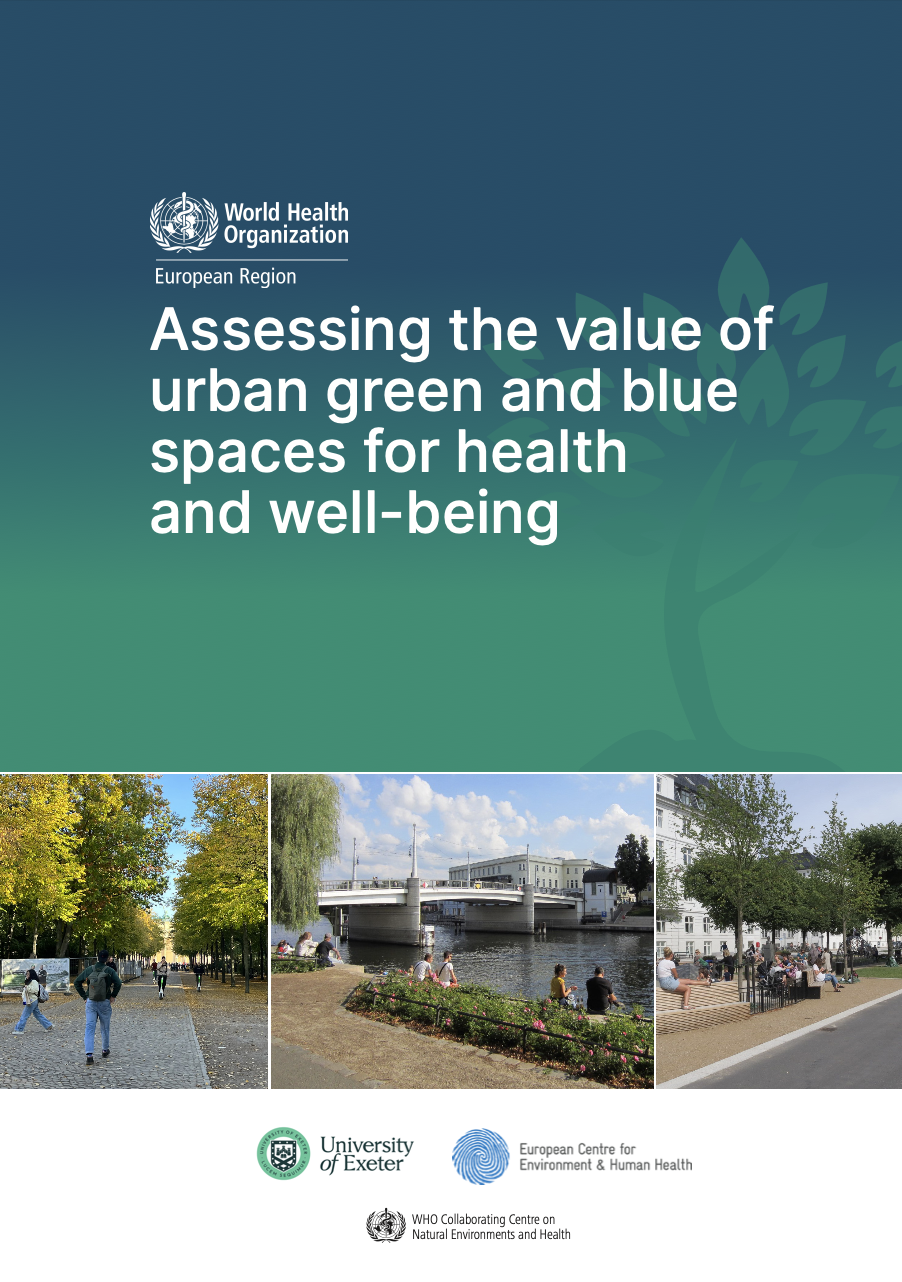
-
Download document
English (pdf, 12,01 MB)
-
Source
Assessing the value of urban green and blue spaces for health and well-being
A growing body of evidence demonstrates the potential of urban green and blue spaces to support and promote health and well-being. These impacts can be used to value the multifunctional benefits (and risks) derived from these spaces. Valuing green and blue spaces is particularly important for policy-makers and practitioners owing to land scarcity and competing land usages. These constraints call for the efficient resource allocation of natural and financial capitals. Therefore, urban planning and design should take account of the value of nature – for environmental, social and health benefits, and in economic terms. This report outlines the range of benefits from urban green and blue spaces and the different approaches, both qualitative and quantitative, that policy-makers and practitioners can use to assess the value of urban green and blue spaces and their impacts on health and well-being.
Acknowledgments
The report was prepared by Tim Taylor, Ruth Garside, Matilda Attrill and Lora E. Fleming (WHO Collaborating Centre on Natural Environments and Health, European Centre for Environment and Human Health, University of Exeter, Truro, United Kingdom).
Production of the report was supported by Matthias Braubach and Sinaia Netanyahu (WHO European Centre for Environment and Health, WHO Regional Office for Europe) through conceptual guidance on content and structure, provision of case study information, and the review of drafts.
WHO acknowledges the technical support of the following contributors: Sarah Bell, Lewis Elliott, Joanne K. Garrett, James Grellier, Cornelia Guell, Rebecca Lovell, George Morris, Lara Warnecke, Benedict Wheeler and Vanessa Gordon (European Centre for Environment and Human Health, University of Exeter, Truro, United Kingdom).
WHO also thanks the reviewers for their input and helpful comments on an earlier version of this report: Marija Bockarjova (University of Twente, Enschede, the Netherlands), Tobias Börger (Berlin School of Economics and Law, Berlin, Germany), Nina Lemaire (French Healthy Cities Network, Rennes, France) and Shiri Zemah-Shamir (Reichman University, Herzliya, Israel).
This report was produced with the financial assistance of the German Federal Ministry of Health and the German Federal Ministry for the Environment, Nature Conservation, Nuclear Safety and Consumer Protection.
For more information about the European Centre for Environment and Human Health WHO Collaborating Centre on Natural Environments and Health, see here: https://www.ecehh.org/about-us/who-cc/




